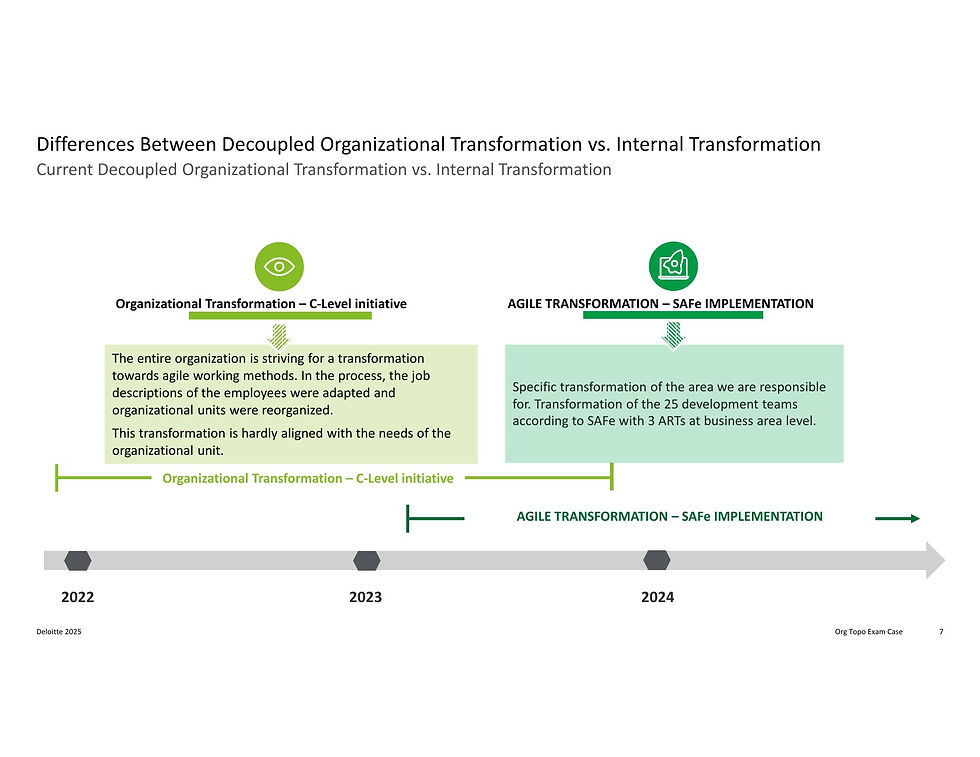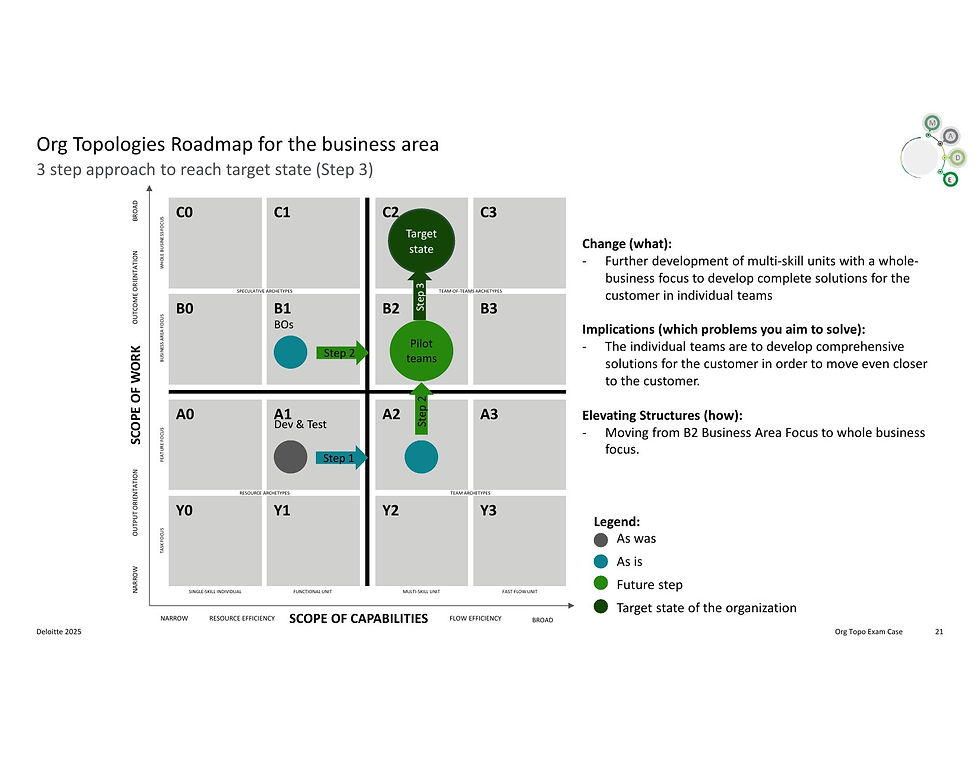Analyzing The Transformation Of A SAP Group At A Large Public Authority (Deloitte)
- Thomas Karl
- Mar 22
- 2 min read
Updated: May 18

This case study by Karl Thomas and Nico Liedl from Deloitte explores a large-scale transformation initiative within a public authority’s SAP department.
The department, initially structured in a traditional and hierarchical manner with over 500 employees working in waterfall mode and six annual releases, embarked on a dual transformation journey.
On one side was a C-level driven organizational transformation, and on the other, a SAFe-based agile transformation with multiple Agile Release Trains with a Team Topologies design inside.

















Download the full case study in PDF format here:
Outcomes
The outcomes of the Org Topologies transformation case with Karl and Liedl were a mix of progress and persistent challenges, highlighting both the power and the limitations of typical agile transformations when not systemically aligned.
On the positive side, the SAFe implementation was completed across four waves, resulting in 25 agile teams organized into three Agile Release Trains (ARTs). These teams achieved a CAPS-2 level (formerly A2) in the Org Topologies map. This shift led to tangible benefits such as increased delivery speed, greater team flexibility, and the successful implementation of an agile pilot across an entire business area. Teams began working in shared Program Increments (PIs) and adopted modern methods like Scrum and Kanban.
However, deeper organizational alignment was not achieved. Major systemic misfits persisted, such as a misalignment between the organization’s structure and its actual work processes, siloed budget control, a lack of clear ownership, and a significant product gap. While teams had improved locally, the overall ecosystem remained fragmented. The dual transformation approach—one top-down (C-level led) and one bottom-up (SAFe implementation)—was not integrated, leading to confusion and disconnected efforts.
In summary, the outcome was that the teams improved operationally (speed and flexibility), but the organization did not yet achieve higher-level adaptability or business agility. The transformation stalled at the CAPS-2 level, and to unlock further gains, a shift toward PART or WHOLE-level archetypes is necessary. This will require a more integrated, systemic change effort guided by Org Topologies’ full MADE method.






Comments